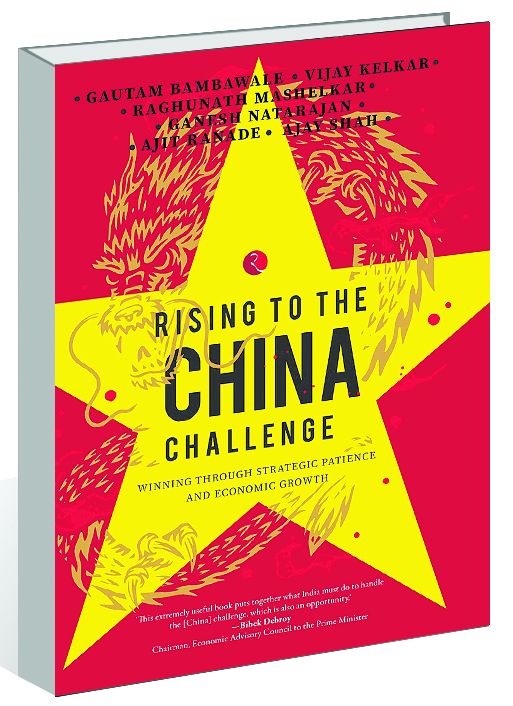Rising To The China Challenge by Gautam Bambawale, Vijay Kelkar, Raghunath Mashelkar, Ganesh Natarajan, Ajit Ranade & Ajay Shah. Rupa. Pages 176. Rs595.
Book Title: Blueprint for China challenge
Author: Gautam Bambawale
Sandeep Dikshit
The Galwan valley clash and the subsequent activity on the LAC opened the floodgates for books on India-China relations. Few of them though have been free from rancour or a sense of injury seeping in the pages. Fewer still transcended the grammar of international affairs and military affairs, though in small amounts of space and time, these aspects are extremely important.
The task is difficult because of the requirement to delve into raw data, instil sense into it and then subject it to comparisons. The largest chapter, aptly titled ‘David vs Goliath’ but with a question mark, does just that for a well-rounded appreciation of India standing in comparison to China in sectors that will catalyse futuristic prosperity, skilled jobs and a sharper edge to defence prowess.
Some shortcomings will never be bridged — like China’s march in the area of artificial intelligence. But the playing field has also been levelled, like in automobiles. In all, India has a fighting chance in some of the nine categories put under the lens.
For a book by six authors, the risk of disjointedness between chapters, despite skilled editing, has been solved because all of them live in the same city, Pune, and had put their collective minds to the subject since the June 2020 Galwan valley incident.
A driving distance of 1,500 km from Delhi should have helped sidestep the temptations of a quick-fix analysis. As Vijay Kelkar and Raghunath Mashelkar, two of India’s finest economic and S&T policy formulators, put it, Doklam and Galwan should not be the end of the story as several others are suggesting.
But the India-China question will be played out on a larger time horizon and with a wider set of tools than just military and diplomatic. By attempting to place the problem in a global context with an accent on economics and frontier areas of research, the attempt is to present a blueprint for national rejuvenation that will translate into the nation rising to the China challenge.
China has created a parallel universe, by sweat or deceit, but all on its own muscle. It is working on its own global communication arteries, multilateral banks like AIIB and NDB, own GPS, massive digital payment platforms like WeChat and Alipay.
India has not done too badly from 1991 to 2019. Its GDP has risen from $275 billion to an impressive $2.9 trillion and the armed forces have gallantly stood up to China in very difficult circumstances.
Notwithstanding Foreign Minister S Jaishankar’s suggestion to Beijing to not view ties with India from the perspective of a third country, the former envoy to Beijing and a long-time China Desk hand, Gautam Bambawale, should know. It is hence premised on the conviction that China is convinced the US will not permit the rise of a peer competitor. And, all other relationships will be tested on the touchstone of the Sino-US relationship.
Many of the authors were once “doers” of the Indian state but make a strong case for lesser dependence on public sector employees even in the frontier areas of space and defence innovation, citing the recent response to Covid-19 as an example. India adopted the inefficient path of galvanising employees of government laboratories to rise to the challenge. In the US, the government put out its requirements and asked the private sector to respond.
One definite concern is the ability to take quick decisions once the policy direction has been established. Atmanirbharta and “vocal for local need”, which carry inbuilt contradictions, too, need to move from pithy slogans to real action on the ground. China is hard at work on identified targets in 10 major areas, including artificial intelligence, robotics, electric vehicles, next gen IT, aviation and aerospace.
Modi 2.0 looks set to embark upon quite a few suggestions made in the book. But there is the exhortation to do more, including revisiting the Special Economic Zones concept. The vigorous exercise to achieve proximity with the Quad and Western Europe may be aimed at filling gaps where China’s lead is unmanageable. The intent is to dress up India in ways that prepare it for any eventuality.














